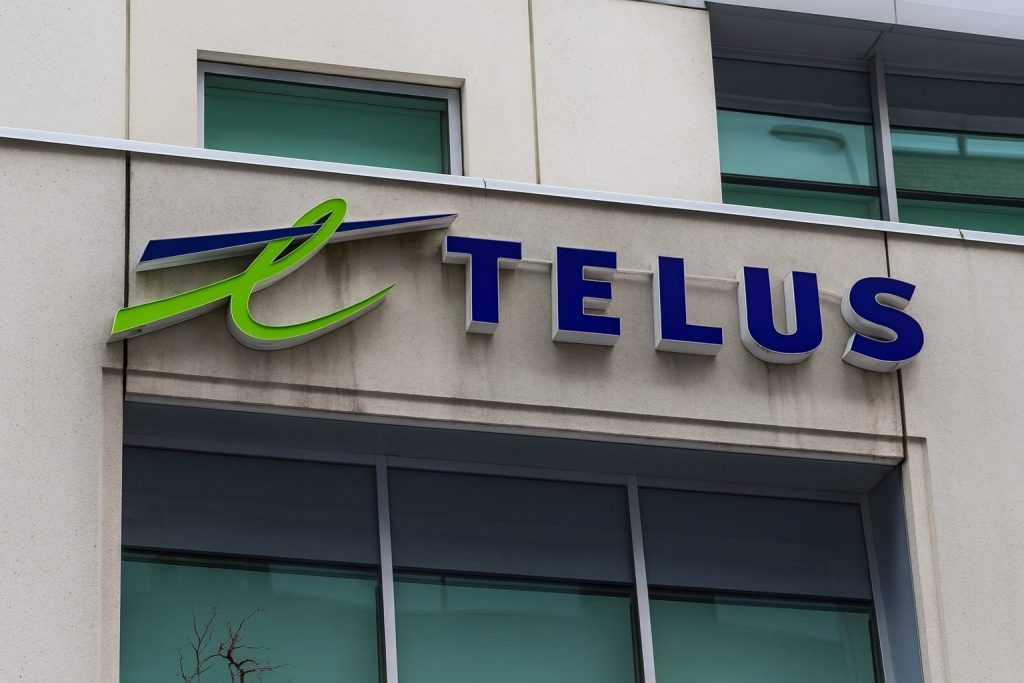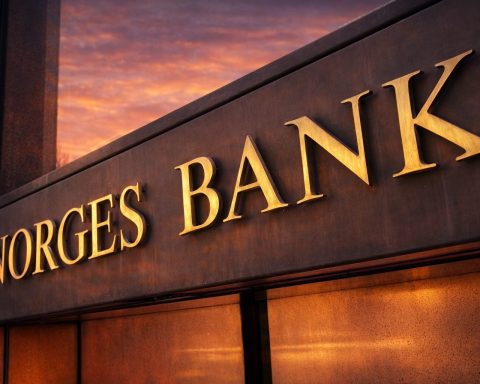London, 28 November 2025
The Autumn Budget has quietly turned Premium Bonds and other NS&I products into the most talked‑about corner of the UK savings market. A technical change in the small print – telling National Savings & Investments (NS&I) to raise an extra £1 billion from savers this year – has triggered a wave of speculation that rates on Premium Bonds and government‑backed savings could soon rise. [1]
At the same time, from 2027 millions of savers face higher tax on interest and a sharply reduced cash ISA allowance, making NS&I’s tax‑free Premium Bond prizes and government‑guaranteed bonds more attractive than they looked just a week ago. [2]
Key points at a glance
- NS&I’s net financing target for 2025‑26 has been raised from £12bn to £13bn (±£4bn) in Budget 2025 – a £1bn uplift. [3]
- So far this year NS&I has raised only £3.9bn, leaving more than £9bn still to find in the second half of the financial year. [4]
- Premium Bonds prize fund rate today (28 November 2025) is 3.60% with odds of 22,000‑to‑1 per £1 Bond each month – unchanged since August. [5]
- Fixed‑rate “British Savings Bonds” were boosted above 4% earlier this month, with 1‑, 2‑, 3‑ and 5‑year terms now paying up to 4.20% AER. [6]
- From April 2027, the cash ISA allowance for under‑65s falls from £20,000 to £12,000 and tax on savings interest rises by 2 percentage points, hitting many cash savers. [7]
- The Bank of England’s base rate is currently 4%, and markets expect the first cut as early as December, narrowing the window for any NS&I rate hikes. [8]
1. What exactly did Budget 2025 change for NS&I?
On 26 November, Chancellor Rachel Reeves used Budget 2025 to turn NS&I into a bigger funding workhorse for the Treasury. In the official documents and NS&I’s own statement, the government increased the savings agency’s net financing target for 2025‑26 from £12bn to £13bn, within a tolerance band of plus or minus £4bn. [9]
“Net financing” is the net amount of new money NS&I must deliver to the government after accounting for deposits, withdrawals, and interest or Premium Bond prize payments. The Budget sets NS&I alongside gilts and Treasury bills as a formal part of the UK’s funding mix, with the higher target designed to reduce the amount the government has to borrow from wholesale markets. [10]
NS&I’s chief executive, Dax Harkins, welcomed the increase and reiterated that NS&I’s product “pricing is designed to meet this revised target and maintain market stability” – a clear signal that rates are a policy lever the organisation is willing to pull when needed. [11]
2. The £9bn question: how far off is NS&I from its new goal?
The twist is timing. Alongside the Budget announcement, NS&I published unaudited results for the first half of the 2025‑26 financial year:
- Q1 2025‑26 net financing: £2.5bn
- Q2 2025‑26 net financing: £1.4bn
- Total H1 2025‑26:£3.9bn net financing
- Total NS&I holdings (“stock”) by end of September: about £243.9bn. [12]
That means less than one‑third of the new £13bn target has been achieved, leaving just over £9bn still to raise in the second half of the year. TechStock²+1
For context, NS&I delivered £9.8bn of net financing in 2024‑25 and £11.3bn in 2023‑24 – already punchy numbers. This year’s revised £13bn goal is therefore materially more ambitious than in recent years, especially given falling interest rates in the wider market. [13]
Historically, when NS&I has been under pressure to raise more money, it has responded by making its products more attractive – either by hiking fixed‑term bond rates or tweaking the Premium Bonds prize fund. TechStock²+2nsandi-adviser.com+2
3. Premium Bonds today: unchanged rates, rising expectations
Despite all the headlines about a “£1bn Premium Bonds change”, nothing has actually been altered for bondholders yet. The £1bn headline refers to NS&I’s fundraising target, not to a guaranteed £1bn boost to the prize pot. TechStock²+1
As of 28 November 2025, NS&I’s own rate tables show: TechStock²+2TechStock²+2
- Prize fund rate: 3.60% a year (variable)
- Odds of winning: 22,000 to 1 per £1 Bond per month
- Tax treatment: all prizes are tax‑free
- Holding limits: minimum £25, maximum £50,000 per person
The 3.60% prize fund rate has been in place since the August 2025 draw, after cuts earlier in the year from 4.00% to 3.80% and then to 3.60%. TechStock²+1
Analysts quoted by specialist outlets such as MoneyWeek and TechStock² argue that the combination of: [14]
- a higher funding target,
- only £3.9bn raised so far, and
- the ability to raise up to £17bn within NS&I’s ±£4bn tolerance band
puts the Premium Bonds prize fund “in the frame” for a future uplift if inflows into other accounts fall short.
But NS&I has not confirmed any change, stressing only that it “regularly reviews” rates to balance savers, taxpayers and the broader financial system. [15]
4. Where NS&I has already raised rates: British Savings Bonds over 4%
While Premium Bonds grab the headlines, the most concrete move so far is in NS&I’s fixed‑term “British Savings Bonds” (rebranded Guaranteed Growth Bonds and Guaranteed Income Bonds).
On 7 November 2025, NS&I launched new issues of its 1‑, 2‑, 3‑ and 5‑year bonds with significantly higher fixed rates for both growth and income options: [16]
Guaranteed Growth Bonds (Growth option)
- 1‑year: 4.20% gross/AER
- 2‑year: 4.10% gross/AER
- 3‑year: 4.16% gross/AER
- 5‑year: 4.15% gross/AER
Guaranteed Income Bonds (Income option)
- 1‑year: 4.13% gross (4.20% AER)
- 2‑year: 4.03% gross (4.10% AER)
- 3‑year: 4.09% gross (4.16% AER)
- 5‑year: 4.08% gross (4.15% AER)
These products:
- require a minimum £500 investment,
- allow up to £1m per person per issue, and
- do not permit early withdrawals, so money must be locked away for the full term. [17]
NS&I itself has framed these higher rates as part of a balancing act between offering competitive returns, protecting taxpayers, and maintaining market stability, while still delivering higher net financing to the government. [18]
In other words, fixed‑term bonds are the first lever NS&I has clearly pulled in response to the Budget – and they may remain the main workhorse if Premium Bonds are left unchanged for now.
5. The wider squeeze: cash ISA cuts and higher tax on savings interest
Budget 2025 doesn’t just ask NS&I to raise more money; it also reshapes the tax landscape for savers.
Key changes include: [19]
- Cash ISA allowance cut for under‑65s
- From April 2027, the annual cash ISA limit for those under 65 falls from £20,000 to £12,000.
- Over‑65s retain the full £20,000 cash ISA allowance.
- The overall ISA limit stays at £20,000, but at least £8,000 of that must go into investments (such as a stocks & shares ISA) rather than cash if you’re under 65.
- Tax on savings interest increased by 2 percentage points
- From 2027‑28, the basic‑rate tax on savings interest rises to 22%, higher rate to 42%, and additional rate to 47% for interest above the personal savings allowance. [20]
- Dividend and property income also taxed more heavily
- Dividend tax rates rise by 2 percentage points from April 2026 at basic and higher rates.
- Tax on property income climbs to the same 22% / 42% / 47% structure as savings interest from April 2027. [21]
Experts warn that this “tax on prudence” will push more savers into the tax net, especially given frozen income tax thresholds and strong cash returns over the past two years. [22]
Crucially, these changes do not affect Premium Bond prizes, which remain tax‑free, and they do not tax the capital held in NS&I products. That’s one reason many commentators expect greater interest in NS&I’s government‑backed savings, even before any future prize fund rise. TechStock²+2TechStock²+2
6. Bank of England backdrop: a race against falling interest rates
The Budget lands in a shifting interest rate environment. The Bank of England’s base rate is currently 4%, having been cut from 4.50% in August and held there at the November Monetary Policy Committee meeting in a tight 5–4 vote. [23]
Markets now assign a high probability to at least one rate cut in December and further reductions heading into 2026, as inflation eases towards the 2% target. [24]
That matters because:
- As base rates fall, high‑street savings rates will gradually drift down.
- NS&I has to stay broadly in line with the market to avoid distorting competition, even while hitting its higher fundraising target. [25]
Analysts therefore see a relatively narrow window – roughly the next few months – during which NS&I could raise Premium Bonds prizes or hold them at current levels before wider rate cuts put downward pressure on returns again. [26]
7. What this means in practice for different savers
This article is news and general information, not personal financial advice, but the current picture for three common types of saver looks roughly like this:
a) Existing Premium Bonds holders
- You still have a 3.60% prize fund rate and 22,000‑to‑1 odds per £1 Bond, with completely tax‑free prizes. TechStock²+2MoneyWeek+2
- The higher NS&I target makes another cut to the prize fund less likely in the short term, as NS&I still needs to draw money in, not push it away. [27]
- There is now a credible chance of a modest prize fund increase if inflows remain weak – but nothing is guaranteed, and NS&I might instead lean more heavily on fixed‑rate bonds. [28]
- Remember: Premium Bonds are lottery‑style. Even if the prize rate rises, many people will still see long stretches with no win at all. [29]
b) Savers considering fixed‑term NS&I bonds
- British Savings Bonds now pay 4.10–4.20% fixed, with a 100% HM Treasury guarantee – highly competitive versus many bank bonds, especially for those nervous about smaller institutions. [30]
- The trade‑off is access: you cannot withdraw early, so these bonds suit money you genuinely will not need for the term. [31]
- Given NS&I’s £9bn‑plus shortfall, many commentators expect these fixed‑rate offers to be a key tool in hitting the new target – possibly more so than Premium Bonds, at least initially. TechStock²+2TechStock²+2
c) Easy‑access savers and ISA users
- NS&I’s Direct Saver, Direct ISA and Income Bonds currently sit in roughly the 3.26–3.55% range – “decent but not market leading” compared to some challenger banks and building societies. TechStock²+1
- From April 2027, under‑65s will only be able to shelter £12,000 of cash a year in ISAs, while tax on interest above the personal savings allowance will be higher. [32]
- That combination is already prompting experts to highlight Premium Bonds and NS&I fixed‑rate bonds as ways for risk‑averse savers to mitigate the future tax hit, alongside investment ISAs for those comfortable with market risk. [33]
8. So, will Premium Bonds rates actually go up?
Putting it all together, as of 28 November 2025:
- The only confirmed change is the £1bn uplift in NS&I’s fundraising target and the boost to fixed‑term bond rates. [34]
- Premium Bonds remain at 3.60%, with unchanged odds and limits, but analysts widely see an increased chance of a future prize fund rise if NS&I struggles to close its £9bn gap. [35]
- The Budget’s tax hikes and ISA reforms are likely to push more money towards NS&I products over the next few years, whether or not Premium Bonds rates move immediately. [36]
- The looming Bank of England rate cuts mean any NS&I uplifts could be time‑limited, with pressure later to follow the market down. [37]
For now, savers have something they haven’t seen in a while: genuine hope rather than hype around Premium Bonds – plus a very real 4%‑plus option in British Savings Bonds for those willing to lock money away.
References
1. nsandi-corporate.com, 2. www.evelyn.com, 3. nsandi-corporate.com, 4. nsandi-corporate.com, 5. moneyweek.com, 6. www.nsandi-adviser.com, 7. www.ft.com, 8. www.bankofengland.co.uk, 9. nsandi-corporate.com, 10. nsandi-corporate.com, 11. nsandi-corporate.com, 12. nsandi-corporate.com, 13. nsandi-corporate.com, 14. moneyweek.com, 15. moneyweek.com, 16. www.nsandi-adviser.com, 17. www.nsandi-adviser.com, 18. www.nsandi-adviser.com, 19. www.ft.com, 20. www.evelyn.com, 21. www.evelyn.com, 22. www.evelyn.com, 23. www.bankofengland.co.uk, 24. www.thesun.co.uk, 25. nsandi-corporate.com, 26. moneyweek.com, 27. moneyweek.com, 28. moneyweek.com, 29. moneyweek.com, 30. www.nsandi-adviser.com, 31. www.nsandi-adviser.com, 32. www.ft.com, 33. www.thetimes.com, 34. nsandi-corporate.com, 35. moneyweek.com, 36. www.ft.com, 37. www.bankofengland.co.uk










